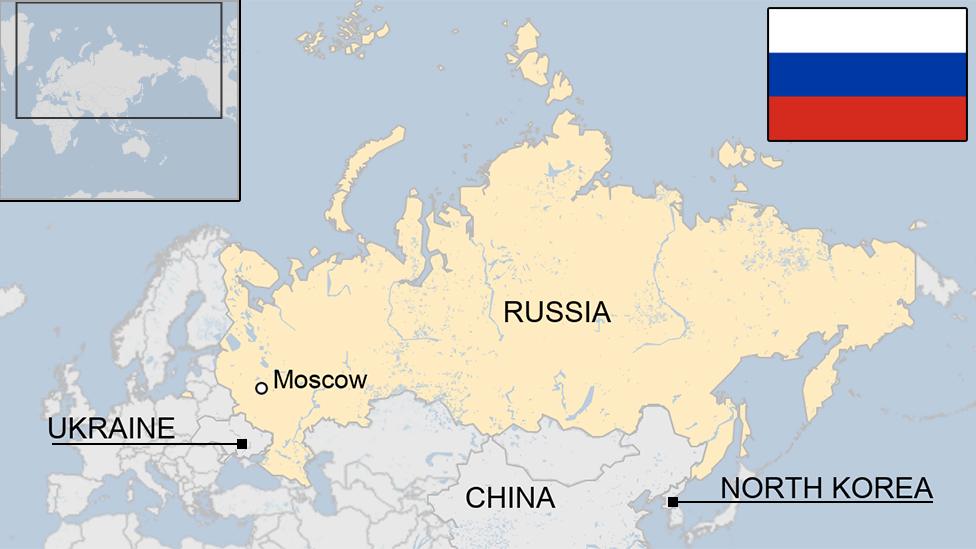Russia boosts military might despite sanctions
- Published
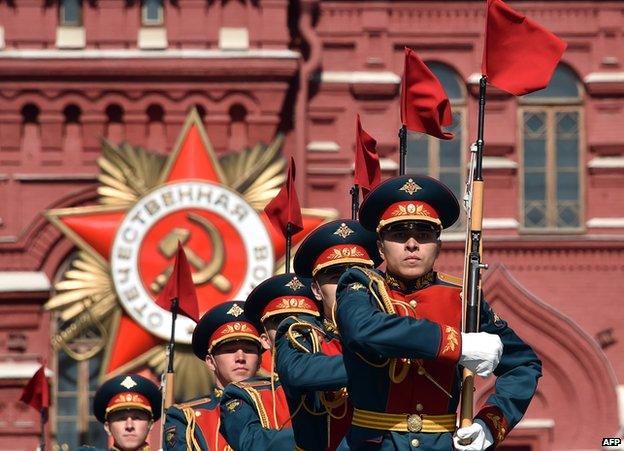
Communist-era emblems are back in fashion for WW2 Victory Day
Russia's 9 May military parade in Red Square has added significance this year.
The 70th anniversary of victory in World War Two is an opportunity for the Russian military to show off some of its latest equipment.
And President Vladimir Putin can demonstrate to his own people, and to the world, that Russia is back in the military equivalent of the premier league.
Russia's armed forces modernisation is still very much a work in progress. But the fighting in eastern Ukraine has demonstrated that, over recent years, elements of the Russian army have significantly improved, in equipment and capability.
Keir Giles, an expert on the Russian armed forces at the Conflict Studies Research Centre, says the current military reform has been going on for seven years, and was "kick-started by Russia's military performance in the war with Georgia in 2008".
"Russia won that war convincingly," he says, "but confirmed in the process that the way its troops were organised and equipped was out of date.
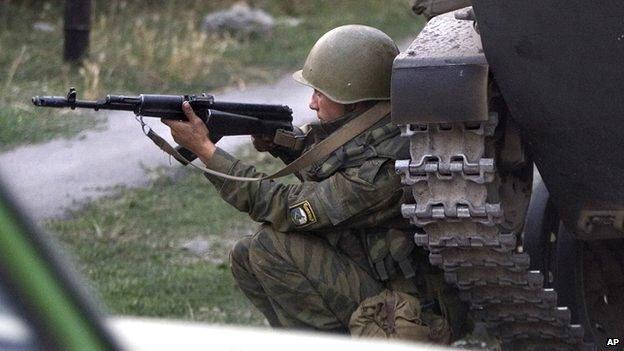
Russian soldier in South Ossetia, 2008: The Georgia war exposed some army deficiencies
"Since then, Russia has been working hard to overhaul almost every aspect of its military, including massive investment in new weapons systems - everything from nuclear weapons down to the uniforms and equipment carried by individual soldiers."
The fighting in eastern Ukraine has demonstrated that military reform is already bearing fruit. Nato commanders point to the Russians' improved use of electronic warfare, unmanned drones and better logistical support.
"Russia has taken what was left of the Soviet Army and finally turned it into a fighting force designed for 21st-Century conflict," Mr Giles says.
National priority
There is still a lot of work to do, and Russia's economic position has inevitably been weakened by the fall in oil prices and Western sanctions, following Russia's seizure of Crimea last year and its actions in eastern Ukraine.
But Igor Sutyagin, a military analyst at the RUSI think-tank in London, argues that money for military modernisation appears to have been ring-fenced.
There remain "deep institutional problems in the Russian government model", he says: problems that will persist even if oil prices rise and sanctions are ultimately lifted.
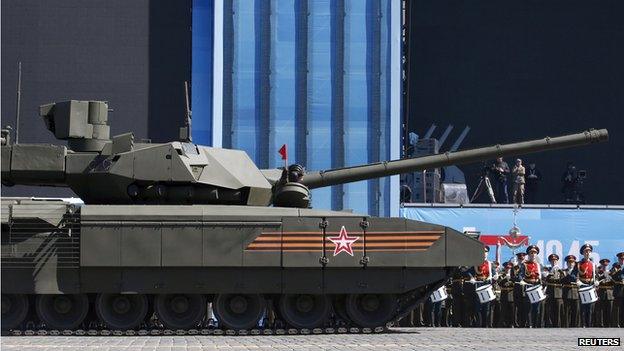
The Armata T-14 tank is now the pride of the Russian army
New-generation tank
The Armata T-14 tank is a revolutionary vehicle for the Russians - the first truly new tank design since the Cold War.
All of Russia's current tank models are essentially upgrades of a design that goes back to 1964, when the T-64 went into service.
As Igor Sutyagin explained, that old design is now obsolete, "too compact to insert anything new into it".
"It was designed in a different environment - for World War Two-type engagements, tank-on-tank.
"Today, anti-tank weapons attack tanks from the top and it is effectively impossible to improve the protection of a T-64 type. So the Russian army needed a fundamentally different design - that was the promise of Armata."
The Armata may symbolise the Russian military's future, but it makes much wider use of electronics on-board, and Igor Sutyagin says that is a problem.
"Up to 80% of the chip-sets for the most critical electronics in the Russian electronics industry are imported - and mainly imported from the West."
Even if sanctions are lifted, he thinks a legacy will remain and, as in the Cold War years, there may be significant restrictions on exports to Russia with potential military uses.

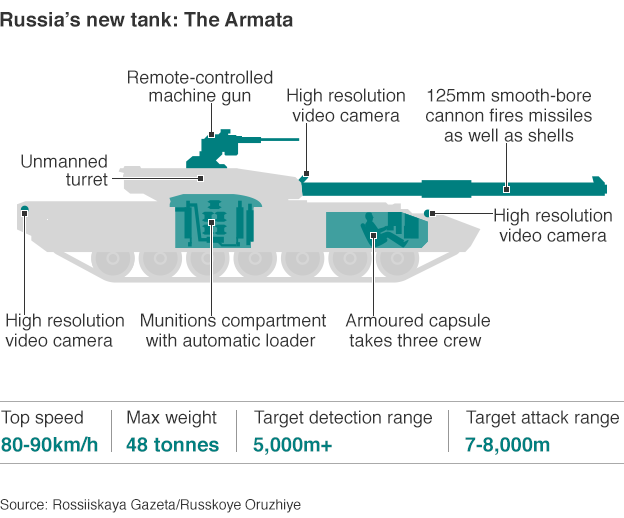

Reliance on Ukraine
Russia's rift with Ukraine has even greater immediate significance.
As Keir Giles notes, "another major headache for military modernisation is the loss of access to the Ukrainian defence industry.
"Even this long after the end of the USSR, some parts of the Russian and Ukrainian military-industrial complexes still functioned in close co-operation. Now, Russia has to source key components for its warships, aircraft and weapons systems elsewhere - or start to build them itself."
Igor Sutyagin agrees. "Russian defence officials openly recognise that 30% of Ukrainian imports to Russia's defence industry cannot be substituted domestically. One-third is large enough, when you bear in mind that one out of every five pieces of Russian military hardware is either Ukrainian or depends upon Ukrainian parts."
Of course, no military the size of Russia's can be modernised in one go. Russia prioritised strategic nuclear forces, with new missiles and submarines.
For the army, "the priorities were special forces and the airborne assault troops," Keir Giles says.
"One result was the highly capable special forces troops that appeared on the streets of Crimea in February 2014."
But improvements have also been rolling out "across the whole of the army", he says.
Western analysts believe the Russian army may be facing manpower challenges in maintaining forces close to Ukraine. But the conclusion was that Russia might be able "only" to put 90-100,000 men in the field, "which still dwarfs anything Ukraine's Western neighbours might be able to muster to resist Russian pressure", Mr Giles says.
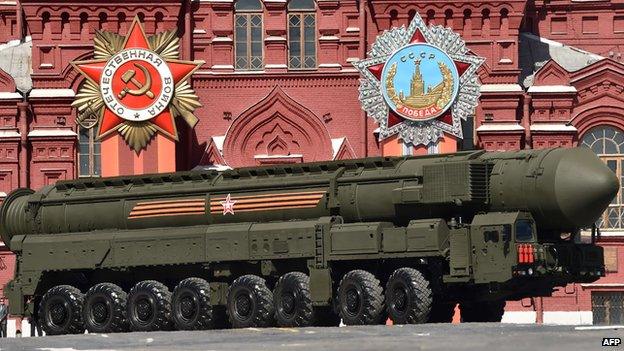
The RS-24 missile: Russia still has a mighty nuclear arsenal
Nuclear arsenal
A worry for Western observers of Russia's military modernisation is the frequent reference to nuclear weapons by Russian officials.
Igor Sutyagin says such talk reflects Russia's awareness of its "inability to compete on equal terms with the West in conventional terms".
Particularly alarming for Keir Giles is the new emphasis on the potential use of nuclear weapons, by senior government officials including President Putin.
"It is another example of how military posturing that makes perfect sense in Moscow is incomprehensible in the West. Soviet offensive plans for Europe included early use of tactical nuclear weapons, and they still play a significant - but not publicly acknowledged - role in Russian doctrine."
The experience of Crimea, he says, "shows that just because something is unimaginable for Western planners, this does not mean it is not considered a viable option by Russia".
- Published7 May 2015
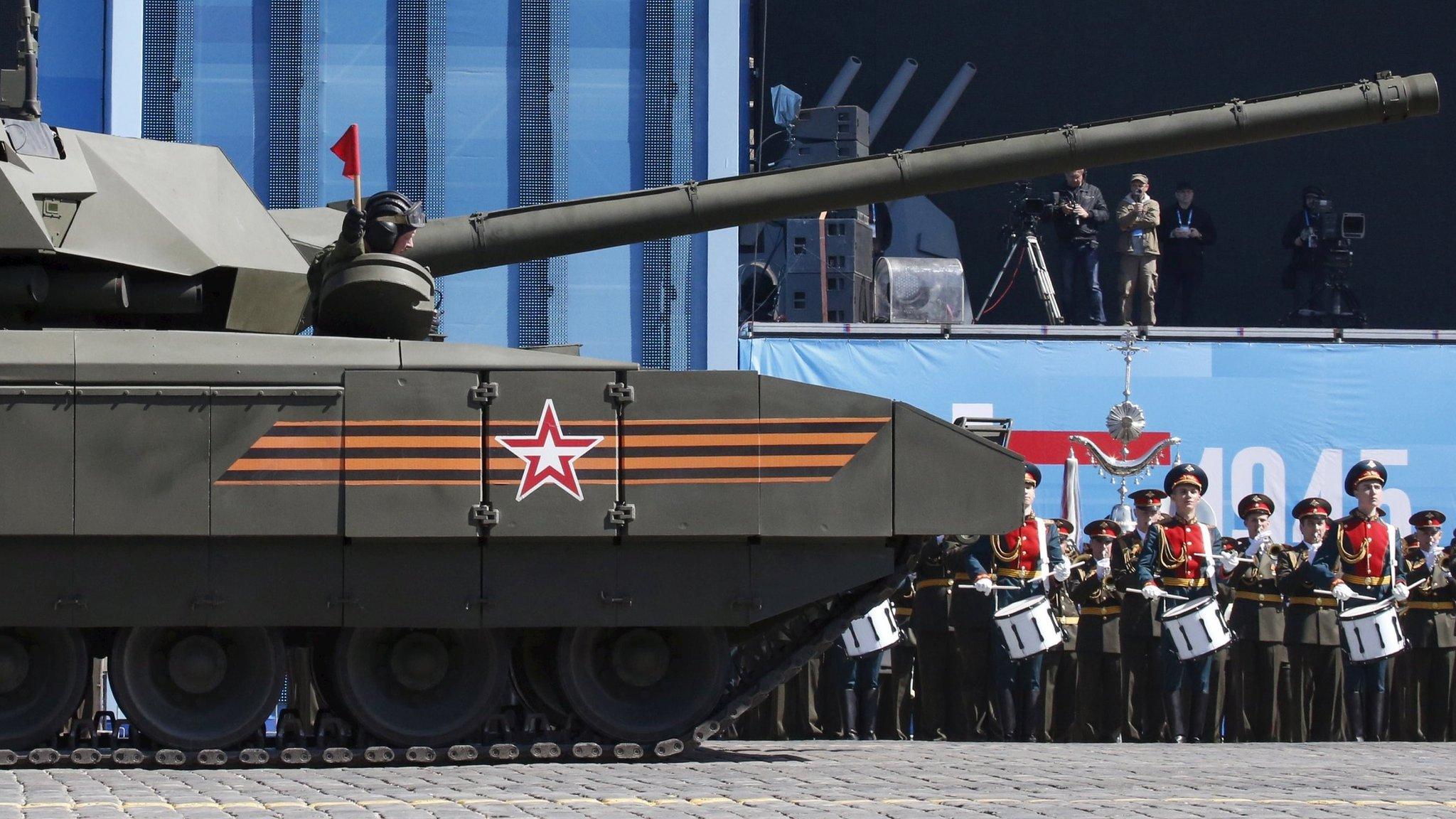
- Published6 May 2015
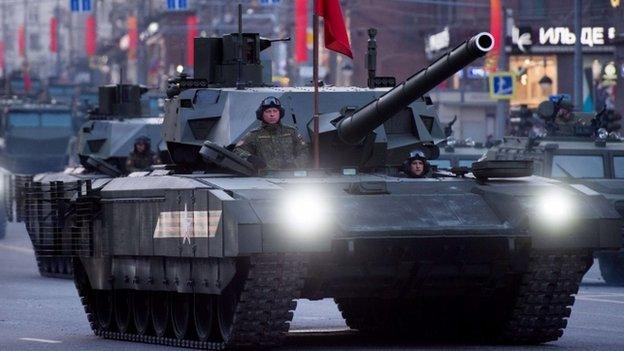
- Published2 September 2014
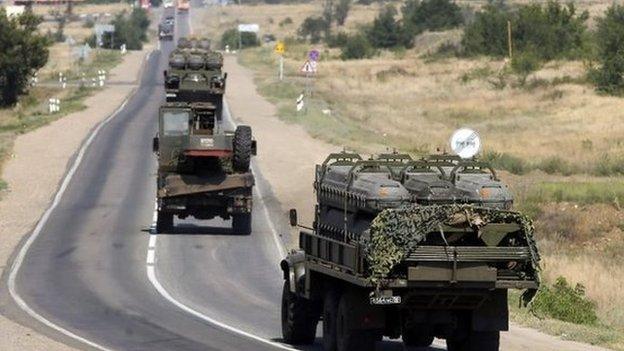
- Published25 March 2024
